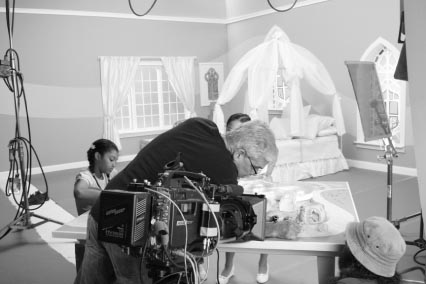STLCC Alumnus changes career path, directs Zhu Zhu commercial

By: Kurt Oberreither
-Staff Writer-
James Landro is an STLCC-Meramec alumnus, entrepreneur and artist at heart who has kept his company, Pulltab Productions, local while reaching audiences around the world. In the early ‘90s, he was working a blue-collar job when he decided to change his career path.
“In my late 20s, I just decided it was never going to be enough for me if I didn’t at least explore the world of creative arts and actually support myself that way,” Landro said. “Can you imagine if someone gave you a list in like sixth grade and said, ‘Here pick one of these jobs: manager at UPS, work at Sam’s Club, or write and direct toy commercials.”
Landro’s higher education began at Meramec where he made long-term friends like Susan Hunt-Bradford, assistant professor of mass communications, and began his life in media.
“I felt nurtured, like they were nurturing my creative potential there, and I’ve never regretted it for one second,” Landro said. “Everything there was very stimulating for me. I was like a kid in the candy store.”
After earning his associate degree from STLCC, Landro moved on to Webster University and earned his degree in film production.
“I knew I was going to go into film, but that’s not really a practical job category in St. Louis,” Landro said. “How many job fairs have you been to where you see Warner Brothers, NBC and 20th Century Fox? I mean you don’t.”
After college, Landro worked his way through the ranks from toy tech to casting at Russell Hornsby’s St. Louis-based toy company, Trendmasters.
“As fate would have it, I ended up in television which is about the best you can do here unless you’re going to be a starving artist,” Landro said.
In 2007, Landro formed his own company, Pulltab Productions. Hornsby’s Clayton-based toy company, Cepia, turned to a California-based company for producing an ad for Zhu Zhu Pets, but because of their past relationship, Hornsby came back to St. Louis. Pulltab uses the facilities at Visiontracks, Inc. in Fenton, Mo. to shoot Hornsby’s diverse range of children’s toys.
“What’s interesting about Pulltab is Pulltab is like the ad agency and production arm all rolled into one. It’s just an interesting business model. I mean it’s something about St. Louis where you can do this kind of stuff,” Landro said.
Hornsby credits Landro for the toys’ success. In December 2009, the high demand for the interactive hamsters caused shortages in stores nationwide. Landro said the initial excitement of seeing his commercial on television has worn off. He said now he compares and contrasts his advertisements with others around it to analyze how the ad fared.
“At first it was super cool because I’m not just the production. That is literally my words that those kids are saying that I wrote,” Landro said. “Now it’s more of a critical exercise to make sure that my media that I’m producing for my client is cutting edge and does stand out.”
Hunt-Bradford met Landro in a communications class where they found they had some commonalities like an affinity for rollercoasters.
“I tell my students all the time it’s all about networking. That’s one thing about Jim… that sets him apart from a lot of people. You can’t just sit and be satisfied with sitting in a classroom and getting a degree in any type of creative field. You have to eat, breathe, live media,” Hunt-Bradford said.
In Landro’s newest endeavor, he is teaming up with Visiontracks to reach new audiences with his skills in
youth advertising and Visiontracks’ range.
One way Landro serves St. Louis and his clients is by using local actors. Landro said he has seen some of
his friends from Webster move into the film industry and he would like to move in that direction as well. “I do feel like I’m so busy that I’m losing time I could be using to work on movies,” Landro said. “I really want to do a feature film.”
Hunt-Bradford said although it is hard to pursue a film career in St. Louis, she would support him. “I’d love for him to one day do a film,” Hunt-Bradford said. Hunt-Bradford said that for media students, learning and leaving are the two challenges to working in the Midwest.
“It seems as though you have to be willing to get a good foundation here but be willing to leave the Midwest because there’s still a stereotype of what the Midwest and it’s not good media-wise. People think that even though there’s so much talent here,” Hunt-Bradford said.











